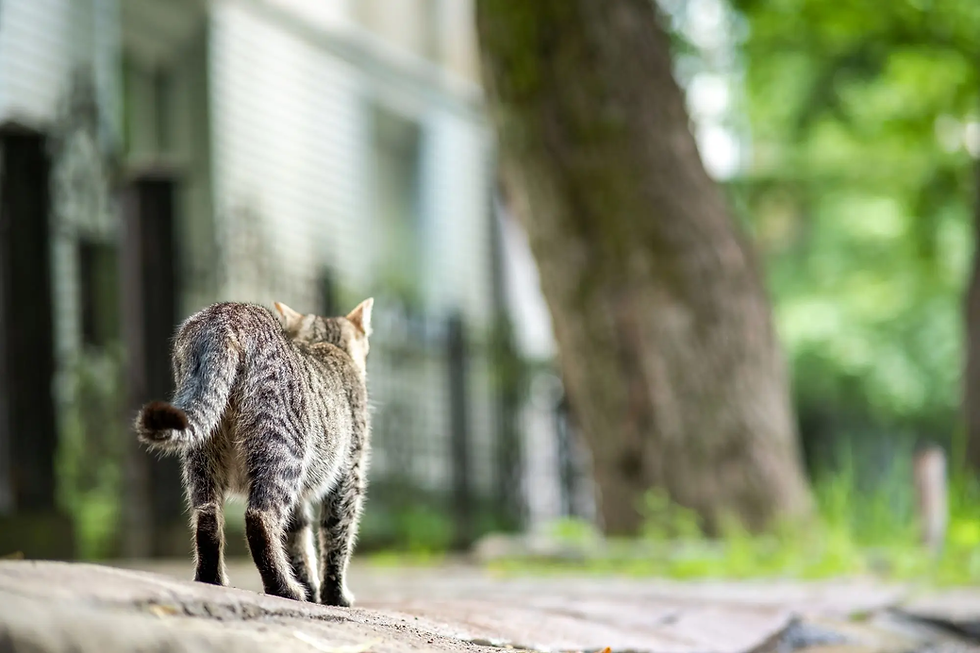Odd Eyed Cats - Opposites Always Attract
- V Carpio

- Apr 29, 2021
- 2 min read
Updated: Jun 6, 2024
We all know cats can be a bit, odd, sometimes. Did you know some can be called odd-eyed?
Though personally, I prefer to call it mesmer-EYES-d!........................... (Should I let myself out?)
The Cat-Friendly way of brushing cat's teeth will leave you mesmerized!
Odd-eyed technically known as heterochromia iridis is when a cat has different coloured irises.

Heterochromia can affect dogs and humans too, though in humans it is quite rare.

There are actually two types of heterochromia. You have complete heterochromia, where the cat has eyes of two different colours. You can also have partial or sectoral heterochromia, where the iris of one eye has more than one colour.

Melanin is responsible for the colour in a cat’s eye. Melanin only begins to be activated when a cat is around 12 weeks old, before this time a kitten as no melanin and hence no pigment, which is why all the kitten’s eye colour is the same tone of blue.
The funny thing is that we see blue not because that is their colour of their eye…it can’t be, colour is produced by the melanin. ‘Blue eyes’ are actually clear eyes; we see blue because it is the light that refracts around their iris.

Heterochromia is caused because melanin is only transferred into one eye. It happens when either the epistatic (dominant) white gene – the same gene that is responsible for turning the fur white – or the white spotting gene – which is the gene that causes the bi-colour fur e.g. tuxedo cats – that prevents the melanin from reaching one eye.
In the case where the cat has sectoral heterochromia then the melanin doesn’t spread correctly around the eye and it leaves parts of it clear, I mean blue.
The epistatic white gene does increase the chances of your cat being deaf; this usually occurs in 3 out of 10 white cats. However, there are no studies suggesting that if your white cat has some form of heterochromia then they will be at greater risk of being deaf.
In terms of vision, all studies suggest that heterochromia does not affect your cat’s ability to see. Therefore if your cat has heterochromia, this is an awesome quirk to have so make sure to enjoy it as it doesn’t affect your cat’s health.
The only time when you should be concerned is if the colour of your cat’s eyes have changed past 12 weeks of age or if at any time only one of their pupils are dilated. In any of these cases please see a vet immediately.



Comments